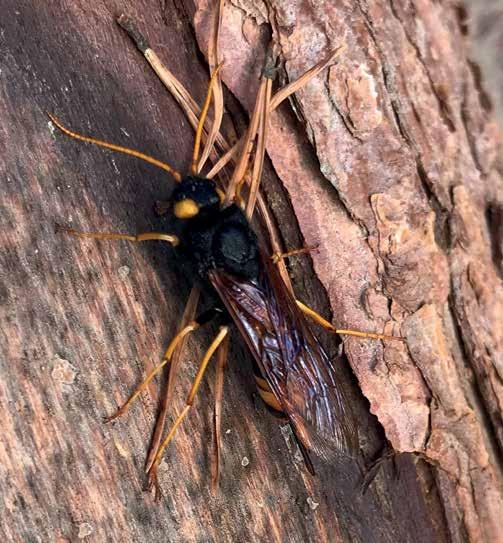
3 minute read
What gets measured gets managed
Tom Astor describes Gresham House’s inaugural Natural Capital audit of the investment firm’s portfolio of forest properties.
The role that ecosystem services and natural capital play within society is increasingly being recognised. That is not to say it is just being discovered – there is little new wisdom within this paradigm. However, the benefits arising from these assets and services, and the costs from losing them, is becoming apparent to a widening segment of the population, along with the role that private investment can play in addressing this historic market failure.
Whilst the list of ecosystem services is long and varied, those which address carbon dioxide and biodiversity sit firmly at the top as the most pressing. Woodlands can provide many of these services, with carbon services more prominent in woodlands producing timber and biodiversity benefits felt to a greater extent in amenity woodlands.
The carbon sequestration aspect from woodlands is relatively straightforward to assess and quantify, but beyond adhering to or exceeding the UK Forestry Standard (UKFS) guidelines, the outcome for biodiversity is more opaque. Regardless of the primary function of the woodland, the UKFS states that the structure should “manage a minimum of 15% of the forest management unit with conservation and the enhancement of biodiversity as a major objective”. It was in the first UK Woodland Assurance Standard in 1999 so this is not a new concept, but deeply engrained within woodland management. The extent to which this structure achieves its objective, and how this is measured, is less clear.
What we’ve done
This summer we conducted a natural capital audit of each property managed by Gresham House across the portfolio of 327 forests. This took the form of a questionnaire which was circulated to the woodland managers to complete. Six specific sections were addressed: • Property designations or certifications • Habitat indicators • Broadleaf condition • Peat condition • Public access • Invasive species.
Why we did it
Timber production has historically been the main focal point of our properties, without the ecological value of productive woodlands having been called in to question in the past. Given that a significant portion of these properties are dedicated to biodiversity, and the growing interest in its value, it was decided to conduct an inaugural assessment. Anecdotally, there were numerous examples of valuable natural capital features from differing sources, but these had never been explicitly investigated and catalogued.
This audit was designed to provide us with a baseline for each woodland and ultimately an overview across all our managed properties. This will provide a valuable ecological database, including a selection of species, whose presence can be used to indicate which habitats are present.
In line with the mantra “what gets measured gets managed”, this data can put us in a stronger position to support the current natural capital benefits of our woodlands. More importantly, it provides a starting point to demonstrably improve them further.
What next
It is particularly helpful to remember that whilst these results are a snapshot of individual properties, combined they cover the spectrum of the planting era from the middle of last century to recently planted woodlands. This selection of first, second or third rotation woodlands with areas of new planting, restocking, midrotation and mature crops provide a valuable insight as to how woodlands mature and the flora and fauna that colonise them.
Having a baseline picture of these properties from a natural capital perspective allows us to consider what is lacking, what can be improved and what requires protecting. Following these “whats” are the “whys”; the arising questions that then must be asked lead us to the “hows”, ultimately presenting opportunities to improve the areas identified.
This audit will be repeated annually, refining the baseline study to improve the methodologies and sections to focus on.
Ultimately, we will improve our understanding of the ecological state of our productive woodlands and which areas require extra attention and improvement. We will also be able to provide the data to support this and enable positive change.
These lessons will allow us to not only improve the way we plan and plant new multifunctional woodlands, providing high quality timber and further natural capital benefits, but also transition existing properties, planted in an era with different objectives, to meet future requirements.










